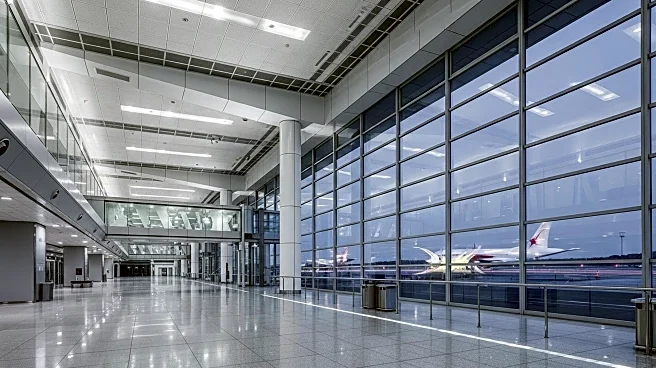What is the story about?
What's Happening?
Arc'teryx, an outdoor brand, faced backlash after a promotional fireworks display in Tibet's Shigatse region raised environmental concerns. The event, part of the Rising Dragon show, involved extensive pyrotechnics and colored smoke along the Himalayan ridgelines. Despite claims of using biodegradable materials and relocating wildlife, the display was criticized for contradicting the brand's environmentally conscious image. Arc'teryx and the involved artist, Cai Guo-Qiang, issued apologies, acknowledging the event's misalignment with their values and pledging to address the issue with local stakeholders.
Why It's Important?
The incident highlights the tension between commercial interests and environmental stewardship, particularly in ecologically sensitive areas like Tibet. It underscores the importance of aligning corporate actions with sustainability commitments, as public perception can significantly impact brand reputation. The backlash reflects growing consumer demand for responsible environmental practices and the potential consequences of failing to meet these expectations. The event also raises awareness about the cultural and ecological significance of the Tibetan plateau, prompting discussions on the impact of tourism and commercialization in the region.
What's Next?
Following the public outcry, the Shigatse government and Communist party branch have launched an investigation into the event's environmental impact. Arc'teryx may face increased scrutiny and pressure to implement more sustainable marketing strategies. The incident could lead to stricter regulations on promotional activities in environmentally sensitive areas, influencing how companies approach branding and consumer engagement. Additionally, the company may need to engage in restoration efforts and collaborate with local communities to mitigate any potential damage caused by the display.
Beyond the Headlines
The controversy also touches on broader issues of cultural sensitivity and the ethical responsibilities of businesses operating in regions with complex historical and political contexts. It raises questions about the role of art and commerce in respecting indigenous cultures and natural landscapes. The incident may prompt a reevaluation of how global brands navigate cultural and environmental challenges, emphasizing the need for more inclusive and respectful practices that honor local traditions and ecosystems.
AI Generated Content
Do you find this article useful?













